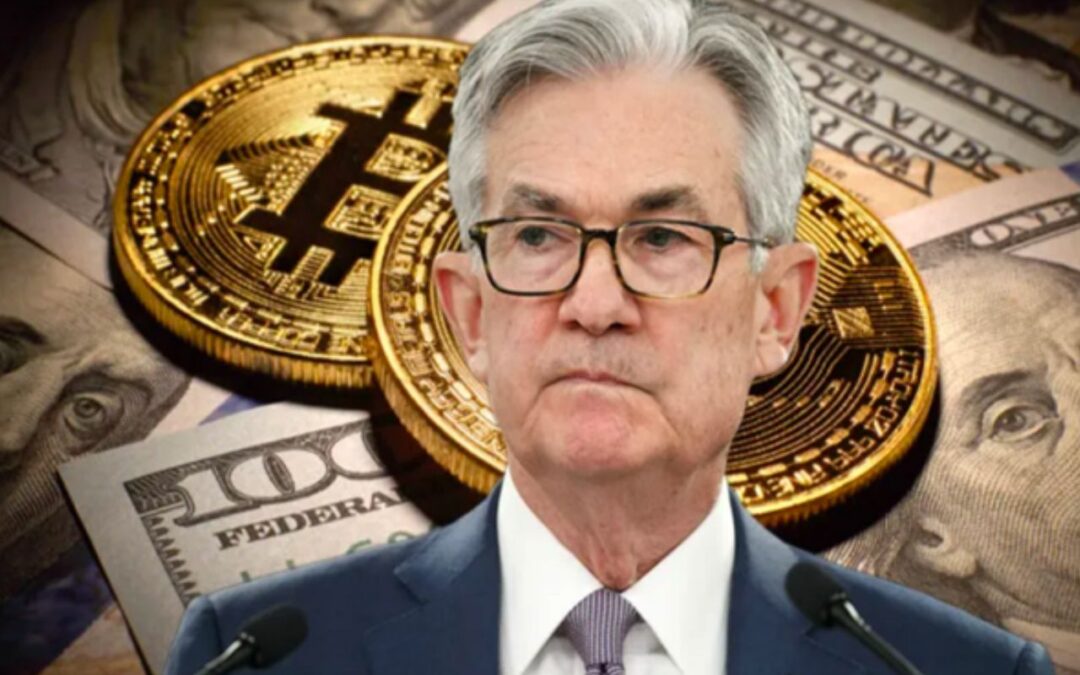Synopsis– The financial world is buzzing ahead of the U.S. Federal Reserve’s September policy meeting. Speculation about a steep 50 basis point cut spread after Standard Chartered Bank made a bold forecast. But Goldman Sachs CEO David Solomon swiftly shut down that possibility, stressing that only a smaller move is realistic. His comments reflect the broad market consensus and signal how investors especially in crypto should recalibrate expectations.
Market Leans Toward a Smaller Cut
David Solomon’s remarks followed days of speculation, but he made his stance clear. He told CNBC, “Whether or not we have a 50 basis cut, I don’t think that’s probably on the cards.” His comment directly countered Standard Chartered’s aggressive projection, which cited August’s weaker-than-expected jobs report.
Meanwhile, CME FedWatch Tool data shows only 7.8% of market participants expect the Fed to trim rates by half a percent at its September 17 meeting. In contrast, 92.2% expect a more conventional 25 basis point cut. Solomon sided with that consensus, adding he was “pretty confident” the Fed will take the smaller step.
Even Jerome Powell, Fed Chair, hinted at a potential cut during his August speech at the Jackson Hole Economic Symposium. But market observers note the central bank leans conservative during periods of uncertainty, sticking to gradual, data-driven adjustments.
Labor Market Softening
If the Fed opts for only a modest cut, the key reason lies in labor market data. Although recent figures show some weakness, Solomon argues it is not severe enough to justify slashing rates by 50 basis points. “When you look at the labor market, there’s a little bit of a softening,” he said, stopping short of describing a major downturn.
That reality underpins the difference between Standard Chartered’s forecast and Solomon’s view. While Standard Chartered points to the jobs report as evidence for deeper cuts, Solomon interprets the figures as signs of resilience. His stance reflects why many analysts, including those at Bank of America, now predict a schedule of two smaller cuts one this month and another in December rather than drastic moves.
The Fed also faces a balancing act. Cutting too aggressively can spark fears of hidden economic trouble. On the other hand, keeping cuts gradual reassures investors that conditions remain under control.
How Crypto Reacts to Fed Decisions
Crypto markets often react faster than traditional assets to central bank policies. Traders view lower interest rates as a green light to embrace riskier, high-reward classes like Bitcoin and Ethereum. The rationale is simple: when bonds or savings accounts yield less, investors seek better returns elsewhere.
Some traders, however, expected fireworks from a large cut. Influencer Mister Crypto argued that a half-percent move could push digital currencies to all-time highs. Yet with the likely outcome pointing toward just 25 basis points, optimism has cooled slightly. A smaller adjustment may boost crypto prices, but not with the explosive momentum many speculators hoped for.
Santiment, a market sentiment platform, also warns against excessive hype. It noted an August surge in social media chatter around Fed cuts, calling it a potential signal that euphoria is running too high. Historically, extreme excitement around one “bullish narrative” often precedes a market top. If the Fed limits cuts, that chatter may quickly reverse, tempering expectations.
Gradual Support, Not Sudden Surges
Solomon also left the door open for additional cuts later this year. He suggested one or two more 25 basis point moves may occur, depending on how economic data unfolds. For crypto markets, that would mean steady, long-term support rather than immediate price explosions.
This measured approach could benefit fundamentally strong blockchain projects that thrive in a stable capital environment. However, traders expecting quick double-digit gains may end up disappointed. Smaller incremental cuts can ease financial conditions without overstimulating markets. That balance may limit extreme volatility and help sustain gradual growth across both traditional and digital assets. Analysts at Bank of America share a similar perspective, having shifted from projecting no cuts in 2025 to foreseeing two moderate reductions. Combined with Powell’s cautious tone, this strengthens the case that the Fed values stability over surprise.
As the September 17 decision approaches, all eyes remain on Powell and the Fed. The outcome will not only guide bond markets and equities but also shape sentiment across the fast-moving world of digital assets.
Written By Fazal Ul Vahab C H





